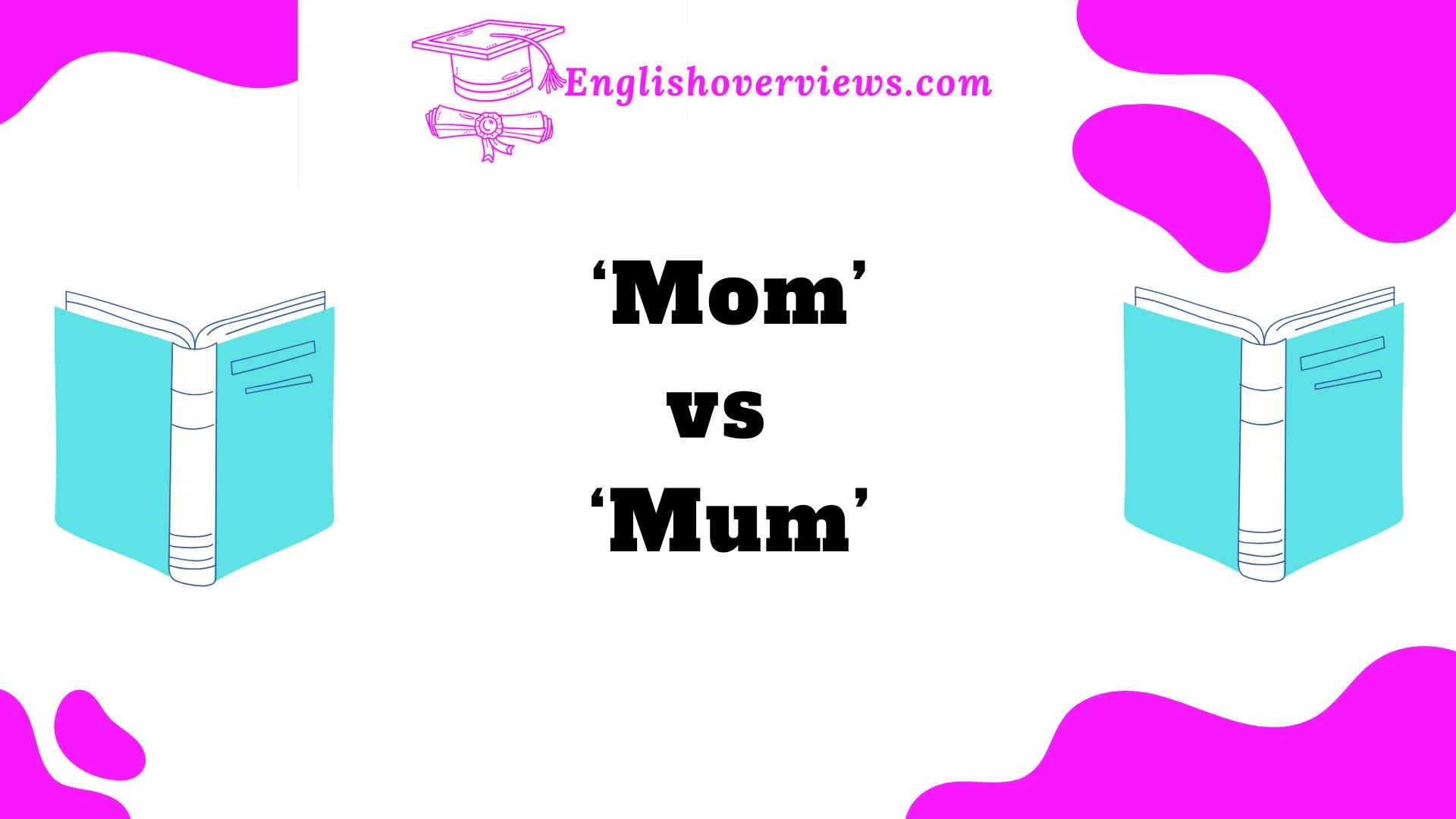Understanding the history and cultural significance of the words ‘Mom’vs ‘Mum’ reveals more than just linguistic preferences-it uncovers stories about tradition, identity, and regional influence. These two simple yet powerful words are deeply woven into family dynamics, cultural narratives, and even global media.
In this blog post, we’ll explore the historical roots, regional variations, and cultural impact of ‘Mom’ and ‘Mum’ across the world. From their linguistic origins to their representation in modern media, every layer tells a fascinating story.
Whether you’re a writer aiming to connect with your audience, a parent curious about language evolution, or just someone who loves exploring the quirks of words, this guide is for you.
Let’s embark on a journey to uncover how these terms evolved, why they differ across regions, and how they continue to shape our world today.
Linguistic Origins of ‘Mom’ and ‘Mum’
The origins of ‘Mom’ and ‘Mum’ trace back to some of the earliest sounds humans produce-‘ma’ and ‘mama.’ These sounds are universally among the first syllables babies learn to vocalize.
A. Etymology and Root Words
- The word ‘Mom’ comes from the Latin word ‘mamma,’ which means breast or mother.
- Similarly, in Proto-Indo-European (PIE) languages, the root word ‘meh₂-’ also signifies motherly figures.
- Variations of ‘mama’ can be found in languages worldwide, such as:
- Mandarin Chinese: 妈妈 (māma)
- Spanish: Mamá
- Hindi: माँ (Maa)
This universal consistency suggests that the word’s phonetic simplicity and emotional connection contributed to its global adoption.
B. Historical First Appearances in Texts
- The first written records of ‘Mom’ and ‘Mum’ appeared in medieval literature and personal letters.
- In Shakespeare’s plays, characters sometimes refer to mothers as ‘Mam’ or ‘Mum.’
- By the 18th century, ‘Mom’ became more common in American English, while ‘Mum’ solidified its place in British English.
C. Phonetic Evolution Over Time
- The phonetic shift from ‘mamma’ to ‘Mom’ and ‘Mum’ likely resulted from regional accents and speech patterns.
- For example:
- American English: The vowel sound is pronounced as ‘ah’ (Mom).
- British English: The vowel sound leans toward ‘uh’ (Mum).
Key Takeaway: The roots of these words show a universal origin but diverged over time due to cultural and regional speech evolution.
Regional Variations and Their Evolution
A. The American Adoption of ‘Mom’
In the United States, ‘Mom’ became the standard term during the 19th century, driven by:
- Mass migration patterns from Europe.
- The influence of early American literature that favored simpler phonetics.
- Regional dialects in the Midwest and Southern states.
Example: Popular American TV shows like Friends and Full House consistently used ‘Mom,’ embedding it into global pop culture.
B. The British Tradition of ‘Mum’
In the United Kingdom, ‘Mum’ became widely accepted thanks to:
- Victorian literature and poetry.
- The prevalence of regional dialects, particularly in London and surrounding areas.
- Social class distinctions, where upper classes sometimes used ‘Mother’ while the working class embraced ‘Mum.’
Example: The famous British sitcom Absolutely Fabulous frequently highlights the term ‘Mum,’ showing its emotional significance in UK households.
C. Local Dialects and Variants
Language isn’t static, and variations exist even within countries:
- Northern England: ‘Mam’ or ‘Mammy.’
- Scotland: ‘Maw.’
- Southern US: ‘Momma’ or ‘Mama.’
Table: Regional Variations of ‘Mom’ and ‘Mum’
| Region | Common Term |
| United States | Mom, Mommy |
| United Kingdom | Mum, Mummy |
| Northern England | Mam |
| Southern US | Momma, Mama |
Key Takeaway: Regional preferences for ‘Mom’ or ‘Mum’ are shaped by history, migration, and cultural narratives.
Cultural and Societal Influences
A. Literature and Language Shaping Perceptions
- Classic books like ‘Little Women’ and ‘Pride and Prejudice’ reflect cultural attitudes toward maternal titles.
- Children’s books often favor phonetic simplicity, influencing how kids address their mothers.
Example: In Harry Potter, the characters frequently say ‘Mum,’ embedding it into international readers’ minds.
B. Media and Pop Culture Representation
- In American media, ‘Mom’ dominates family sitcoms and Hollywood films.
- In British TV shows like Downton Abbey and The Crown, ‘Mum’ reflects upper-class traditions.
C. Migration and Cross-Cultural Exchange
Migration patterns have blurred linguistic lines:
- British immigrants to Canada popularized ‘Mum.’
- Globalization and streaming platforms spread both terms across borders.
Key Takeaway: Books, movies, and migration patterns have kept ‘Mom’ and ‘Mum’ culturally significant worldwide.
Pronunciation and Phonetics
A. Phonetic Differences Between ‘Mom’ and ‘Mum’
- ‘Mom’: Pronounced with a short ‘o’ sound (ah).
- ‘Mum’: Pronounced with a short ‘u’ sound (uh).
Chart: Phonetic Breakdown
| Term | Pronunciation (IPA) |
| Mom | /mɑːm/ |
| Mum | /mʌm/ |
B. How Pronunciation Reflects Identity
- In the US, saying ‘Mom’ can signal familiarity or casual warmth.
- In the UK, ‘Mum’ carries a softer, traditional tone.
Key Takeaway: Pronunciation isn’t just phonetic-it’s emotional and cultural.
Modern Usage in Different Contexts
A. Regional Trends in Parenting and Family Culture
- US parenting blogs predominantly use ‘Mom.’
- UK parenting forums favor ‘Mum.’
B. Online Communication and Global Influence
Social media has blurred these lines:
- Influencers from the US use ‘Mom.’
- UK-based bloggers often use ‘Mum.’
C. Language Adaptation in Multicultural Settings
- In international schools, kids often mix ‘Mom’ and ‘Mum.’
- Workplaces with global teams see both terms frequently used in casual chats.
Key Takeaway: The internet and multicultural spaces have made ‘Mom’ and ‘Mum’ nearly interchangeable.
Practical Guide: Choosing Between ‘Mom’ and ‘Mum’
- Know Your Audience: Tailor usage based on regional preferences.
- Tone and Context: ‘Mum’ might feel more traditional, while ‘Mom’ feels more casual.
- Writing Tip: In formal writing, stick to your target audience’s regional term.
FAQs
1. Why do Americans say ‘Mom’ while Brits say ‘Mum’?
Historical phonetic shifts and regional dialects shaped these preferences.
2. Are there other global variations?
Yes-‘Mama,’ ‘Mam,’ and ‘Momma’ are used in different regions.
3. How did pop culture reinforce these terms?
Movies and TV shows from the US and UK spread these terms globally.
This blog offers a rich exploration of the origins, evolution, and cultural importance of ‘Mom’ and ‘Mum.’ Whether you prefer one over the other, both terms symbolize something universal: love, care, and family.
Conclusion
The words ‘Mom’ and ‘Mum’ might seem simple, but they carry centuries of linguistic history, cultural significance, and emotional depth. Their origins stem from the earliest syllables spoken by infants, yet their evolution tells a story shaped by regional dialects, historical migrations, and global media.
In the United States, ‘Mom’ reflects a warm, casual familiarity deeply embedded in family culture and Hollywood narratives. Meanwhile, in the United Kingdom, ‘Mum’ carries a traditional, heartfelt resonance passed down through literature and generational speech patterns.
Despite these differences, both terms share a universal role as symbols of maternal love and care. Whether spoken softly in a child’s first words or written fondly in a heartfelt letter, they bridge cultural gaps and create connections across generations.
In today’s globalized world, where social media and international communities blur linguistic boundaries, the choice between ‘Mom’ and ‘Mum’ often comes down to audience, context, and personal preference.
Ultimately, whether you say ‘Mom,’ ‘Mum,’ or another variation, the meaning remains the same-a cherished title for one of the most important figures in our lives.

English Overviews is a resourceful website dedicated to providing valuable content related to grammar and vocabulary. Muhammad Haroon has made notable contributions, sharing insights on various subjects, including WordPress themes and plugins. The primary goal of the site is to help users improve their English language skills effectively.











